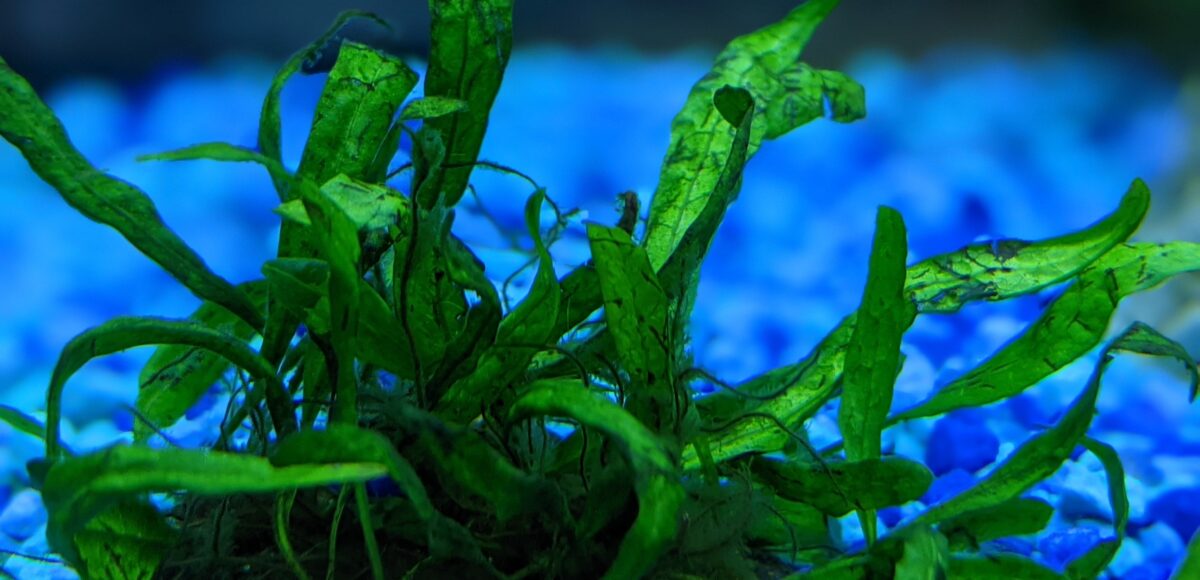Did you know that most of the aquarium plants you purchase from your local store are grown emersed (with their leaves out of the water)? This allows the plants to grow much faster by absorbing CO2 from the air. It also limits pests and algae compared to growing submerged inside water. However, when you bring the plant home and drop it into the aquarium, things tend to deteriorate quickly.
Many have trouble transitioning store-bought and beautifully grown java ferns (AKA microsorum pteropus) into their aquariums. We outline a couple of important tips that allow you to grow java fern submerged, and keep them healthy and thriving.
Care tips that have the highest impact
Keep the algae at bay
It is easy to remove algae from the leaves by rubbing your fingers gently on them. The algae may also attach to the roots as well. If you see that the roots are turning green, or the same color as the algae in your tank, you may have a problem. The only solution I have found is to keep the tank clear of algae as best as possible. If there is algae on the leaves and roots, it may already be too late. Some quick tips to prevent algae:
- Perform more frequent water changes
- Plant more plants to starve the algae of nutrients
- Use chemicals like Flourish Excel — although this is not marketed to kill algae, it has an algicidal effect
There are other methods such as hydrogen peroxide dips and bleach dips. I find if you go this route, the algae clears up fast. However, the java fern may also be killed using this method or have its growth stunted for weeks to months. If you really struggle with algae, I would definitely recommend doing an online search to how to best get rid of it for your situation.
Don’t move them for months!
When the java fern is moved, the roots are re-arranged. The water parameters also change slightly depending on how it is newly situated. When this happens, you may see that the java fern will stop growing completely. The leaves may not die off, but they won’t grow either.
Sometimes, after relocating a java fern, the leaf may even just sit still as new leaves begin to sprout from the rhizome. When this happens and the new leaves have reached an inch or two, I would typically snip off the old leaves.
Similarly, when you transition the plant from the store into your aquarium, you may notice that the plant won’t grow for two or three weeks. You may even notice that the leaves die off. Baby plantlets may develop on the leaves as it goes into defensive mode. Just let it be. When the plant is in transition, the original leaves may die and fall off, but the rhizome should produce new leaves suitable for underwater growth. Again, it is crucially important to not move the plant unless you have to. If you purchased your java fern in a bundle (usually tied with thread), it is a good idea to unwrap them carefully and let the rhizomes and the leaves breath.
The rhizome is more important than the leaves
Yes, leaves are important too — you should have at least one healthy leaf on the plant. However, without a healthy rhizome, you will not have a healthy plant. Some say if grow a healthy rhizome with all the leaves cut off, it can still grow. I haven’t had good luck with that though.
The roots are significant
I have seen success only if I have flourishing roots. When the roots are brown and fuzzy, the plant appears to do great. If the roots are bare and thread-like without the fuzz then you may have problems. The same is true if the roots are fuzzy but green, as you may have an algae problem.
There are sources that say the roots do nothing except help this plant anchor itself down, but I have found this to be criminally untrue. The roots are used to attach to things, but they appear to absorb nutrients as well. This is further proven by the fact that when grown emersed, it can pull water and nutrients from only having the roots in the water or soil it’s grown in.
